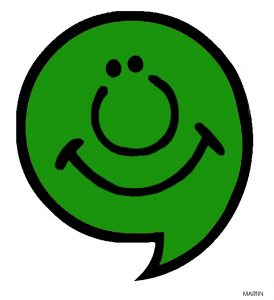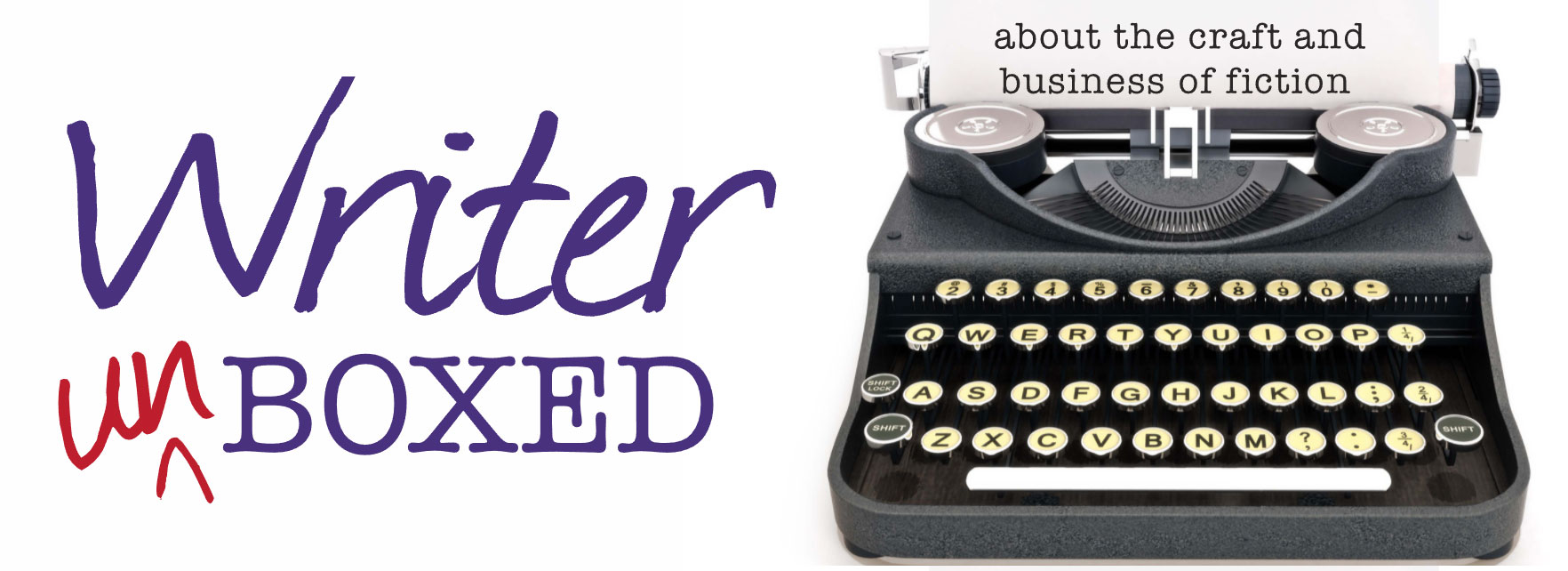How to Communicate Without Words
By Anne Brown | October 16, 2020 |

A while back, I texted my daughter.
Dinner is ready.
Her: Are you mad at me?
What? Why? I'm just saying that dinner is ready.
Her: Your period is really angry.
Perhaps you’ve encountered this yourself. These days, if your text message doesn’t end in an exclamation point, you come off as terse, and even (apparently) supremely pissed off. So, I guess dinner is ready! Hooray! Who knew we’d ever eat again?! *confetti emoji*
But there is something interesting about this phenomenon that applies to fiction writing–namely, while we toil over the perfect word choice to create the right mood and to elicit the intended emotions, those little flicks and curls are sitting there, waiting to do their own heavy lifting. They look small. But they can be mighty.
Here is a non-exclusive list of ways you can use punctuation to impact the emotion in your dialogue and narrative voice.
The Punchy Period:
Using full stops more frequently can add power and energy to your words. They can be used to emphasize an authoritarian voice because periods give the dialogue more control. For example:
“Today, you will be gathering stones from this field, beginning now and working until the sun goes down, and you hear my whistle.”
– versus –
“Today you will gather stones. You will start now. You will continue until the sun sets. Listen for my whistle.”
In which example does the prison guard command the most respect? In which example can you best hear the guard’s speaking voice? For most people, the answer to each of those questions is the dialogue with the most full stops.
But frequent full stops can also be used to indicate uncertainty, surprise, or the inability to understand; for example:
It was a ship. There. On the horizon. Yes. He was almost sure of it.
– and –
She stood. Right in front of him. Not at home with her mother. Not where she should be at all.
Frequent full stops can also show despair, like this example from Brooklyn by Colm Tóibín:
“Would you like me to call Miss Bartocci?” she asked.
“No.”
“Then what?”
“I don’t know what it is.”
“Are you sad?”
“Yes.”
“All the time?”
“Yes.”
Try using frequent end stops whenever you want to deliver an emotional punch.
But wait! There’s more.
The Colorful Comma:
The skillful use of commas (instead of periods) can create instances of narrative voice intended to lull the reader, or to indicate a youthful voice, or even a regional accent. A classic example of the quiet, lulling effect is the opening paragraph of Dickens’ A Tale ofTwo Cities:
- It was the best of times, it was the worst of times, it was the age of wisdom, it was the age of foolishness, it was the epoch of belief, it was the epoch of incredulity, it was the season of Light, it was the season of Darkness, it was the spring of hope, it was the winter of despair, we had everything before us, we had nothing before us, we were all going direct to Heaven, we were all going direct the other way—
But it doesn’t have to be so. J.D. Salinger’s Catcher in the Rye is an example of how comma splices can be used to agitate and show the thinking of a youthful character:
- If you really want to hear about it, the first thing you’ll probably want to know is where I was born, and what my lousy childhood was like, and how my parents were occupied and all before they had me, and all that David Copperfield kind of crap, but I don’t feel like going into it, if you want to know the truth.
And here is William Faulkner using the comma splice to indicate a lilting Mississippi accent in his story, The Bear:
- He was ten. But it had already begun, long before that day when at last he wrote his age in two figures and he saw for the first time the camp where his father and Major de Spain and old General Compson and the others spent two weeks each November and two weeks again each June. He had already inherited then, without ever having seen it, the tremendous bear with one trap-ruined foot which, in an area almost a hundred miles deep, had earned itself a name, a definite designation like a living man.
In short, experimenting with the interchange of full stops and commas is a good way to find your character’s voice.
The Elusive Ellipsis:
The ellipsis, three dots in a row (…) holds the place of text that is omitted or unspoken. It begs the reader to fill in the blank. It, too, can be used to create voice because what is unspoken can be as powerful as what is said. Perhaps the unspoken words create a flirtatious scene, or perhaps the character is shy or uncertain.
Jennifer blushed, surprised that he’d remembered her name. “So, is this seat…?”
“Taken?” He moved his hat from the bus seat and laid it in his lap. “Not anymore.”
Try using the ellipsis in your meet-cute scenes, or when you have a character that’s a fish out of water.
The Multifaceted Em-Dash:
The em-dash is a personal favorite of mine. I often use it to set off explanatory asides (rather than using parentheticals), but my favorite use is to make dialogue sound realistic by having people cut each other off, not necessarily in a rude way (though sometimes), but in the patterns of normal speech.
“Oh my gosh, Flora. I was just at the post office, and you would not beli—”
“I know! I saw the poster, too.”
“Who woulda thought the homecoming king was an honest to goodness bank robber?”
Em-dashes can also be used to used to show breathlessness: Marie bent over, hands on her knees. “You said— We were only— Going to run— Two miles.”
A great example that combines both the youthful cadence created by commas and the interruption of the em-dash is this passage from the middle grade novel, Anya and the Nightingale by Sofiya Pasternack (Nov. 2020):
- She remembered him eating the cheesy bliny with a smile, and then—flash—she could see him dangling from Sigurd’s fist, eyes bulging, choking, feet swinging beneath him, and then—flash—Sigurd by the river, the hand he had choked Father Drozdov with bleeding, his eyes bleeding, his teeth stained—
The em-dashes set off Anya’s chaotic and disjointed thoughts, and the final em-dash suggests more injuries too painful to remember, or a child’s self-preservation in stopping herself from thinking about it anymore.
No Punctuation:
My final example is the rush and teetering chaos of using no punctuation whatsoever.
“Ohmygosh ohmygosh ohmygosh I can’t believe this is really happening I just woke up and the sky is falling.”
While unintentional run-on sentences are frowned upon, the intentional non-use of punctuation is a fantastic way to convey a rush of emotion.
To me, one of the most interesting recent examples of no punctuation is Sally Rooney’s omission of all quotation marks from her dialogue in Normal People:
He sat up and looked down at her.
You were tempted for a second there, she said.
Not really.
I tempted you.
He was shaking his head, smiling. You’re such a strange person, he said.
I can’t speak to Rooney’s intention, but as a reader, this omission of quotation marks emphasizes how much the characters are in their own heads. Even with their frequent miscommunications, the lack of quotation marks makes it seem like the communication is practically telepathic.
What are your favorite ways to convey emotion with punctuation? Are there any examples you’ve read that have really packed a punch?










I love the power of commas and periods. I never thought about not using punctuation, though. I’m going to explore that. Thank you.
Let me know how it goes! Sounds scary.
Anne, I love all of your examples here. As a YA writer, I’m a big fan of the em-dash. The ellipsis, too, for those frequent moments when characters fumble their words. One of the things I love best about punctuation – or lack of it – is how it helps to create cadence and rhythm. Thank you for this wonderful post. (!) :)
Me, too. Rhythm is where it’s at.
I’m a huge fan of the em dash, too. I love all your examples.
Anne, this is an awesome lesson in punctuation rules and when those rules can be broken. Love it. I’ll share!
Hugs,
Dee
Oh, my dear, beloved em-dash, though I use them sparingly. My favorite time using it was my heroine interrupted three times by the agent investigating the case she’s implicated in. The agent she’s falling for. It ends with a heated argument after she cuts him off, with, “Stop interrupting me!” If a period is a hammer falling, an em-dash is an axe. That same heroine, a couple of times, manages to turn a sentence that begins as an answer to a question into an accusation. The joys of dialogue.
Yes, critical in dialogue. Especially large group scenes.
Love this roundup of ideas, Anne. I’m a big fan of punctuation to convey rhythm and emotion, too.
Have you read Come, Thou Tortoise? It’s written from the POV of an unusual teen and doesn’t use a single quotation mark. It’s on my keeper shelf because it’s both hysterical and wise, but in part it’s memorable because of how seamless it felt despite the unusual punctuation.
Hmm. Think I’m about due for a re-read. ;)
^^See what I did there to soften the angry period?
My first love was poetry but – Alas- I was horrible at it. The only thing that carried over to fiction was the importance of rhythm.
Great article, Anne. One thing I have fun with if the occasion fits, is to make a character interrupt his/her own run-on dialog. Such as this guy who’s blown away by the change in his former girlfriend after ten years.
She gave me a quizzical look. “You never came back, you never phoned, never wrote, never said boo.”
“I was busy repairing bicycles and sweeping floors to cover tuition. I slept in a friend’s car, and I won’t tell you how I ate because too often it was not at all, so I got sick and almost flunked my first quarter because I was a walking health hazard I like what you’ve done with your hair.”
It’s kind of a mash-up of your examples, best used sparingly, I think.
I love this post, and thinking about punctuation. In fact, my favorite book for writers is “A Dash of Style” by Noah Lukeman.
I love a semi-colon, but probably overuse them.
You showed nice restraint in that comment though!
These are fantastic examples, Anne. Thank you for the thought-provoking examples, particularly of writers who chose to omit punctuation to heighten the character’s voice.
This gives me a lot of things to ponder when revising a couple of short stories.
As a reader I dislike the em-dash. I never know what it is meant to say. I use dashes in technical forms and outlines at work. Having one show up in a story always cuts me away from the atmosphere of the scene and character.
I would ask you writers to mind how the dash is not what you think it is.
I love the capability of punctuation (or its absence) to s-l-o-w t-h-i-n-g-s d-o-w-n or speedthemup.
And despite Vonnegut saying of the semicolon, “Do not use semicolons. They are transvestite hermaphrodites representing absolutely nothing. All they do is show you’ve been to college,” I find the winning use of a well-appointed hermaprodite to be not only useful, but dashing.
Here’s a fun piece on the punctuation marks authors turned up their noses at: https://www.mentalfloss.com/article/87448/6-punctuation-marks-hated-famous-authors
(Oh—periods aren’t angry; they are mildly annoyed. Period.)
Note: messing with punctuation is always fun, but spelling, not so much, so just imagine that wily “h” being lassoed back into “hermaphrodite” above.
I was going to say, “long live the hermaprodite!”
Taking writing workshops and reading –oh so many books–seminars and lectures about writing for 10 years and I can’t recall this advice–ever! Thank you. I will be looking for phrases where I can flaunt punctuation!
Great post, Anne. I would just add that the ellipsis is only for dialogue. As an editor I’ve been seeing a surge in the use of the ellipsis in narrative portions instead of a comma or other punctuation. One client, when asked about the excessive use of ellipses said that they indicated places where she paused or to indicate an open or rhetorical question. There are other punctuation marks for those situations. In future, I’ll direct people to this post!